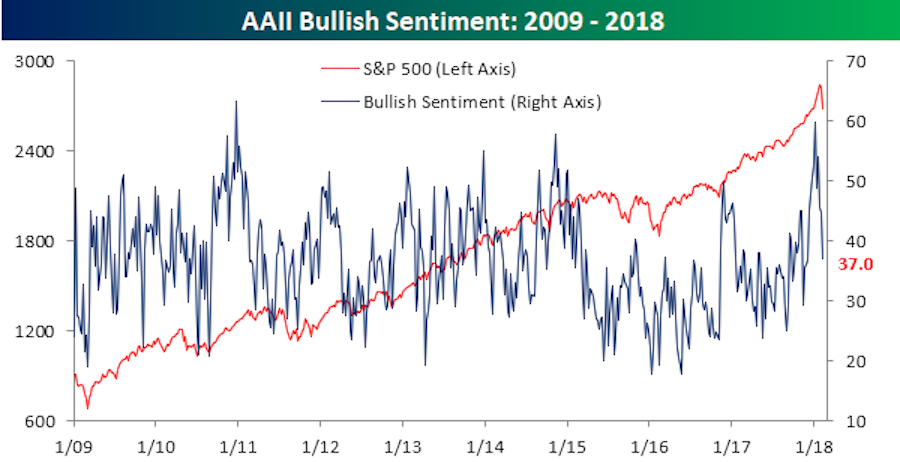Markets on edge — What you need to know on Friday
A wild week for the stock market continues.
Thursday saw the Dow Jones Industrial Average drop more than 1,000 points for the second time in four days while each of the major U.S. indexes lost more than 3.7% for the day. The Dow’s 4.15% decline — which was good for a 1,032-point loss — leading markets lower.
The benchmark S&P 500 lost 100 points, or 3.75%, while the tech heavy Nasdaq lost 274 points, or 3.9%.
Bespoke Investment Group notes that both the Dow and the S&P 500 are officially in correction territory, defined as a 10% drop from recent highs, as the Dow settled at 23,860.46 and the S&P 500 closed at 2,581. The Nasdaq, which closed at 6,777.16, closed about 20 points above its correction level.

The VIX, an index which tracks volatility and that doubled during the trading day on Monday, rose almost 6 points on Thursday to 33. Last year, the VIX hit a record low below 9. Monday’s surge in the VIX led to funds betting against volatility imploding with this development cited by many in markets as part of what’s led to this week’s instability.
Rising interest rates, another commonly cited culprit pressuring stocks this week, were bouncing around Thursday with the closely-tracked 10-year yield rising to 2.86% in the morning before moving back down to 2.82% as stocks sold off. The 10-year, however, moved back up to 2.84% during the afternoon and was little-changed as the stock sell-off accelerated into the close.
Investors typically expect Treasury yields to fall — sending prices higher — with stock markets declining as investors seek a safe haven. This pattern not holding this week is another factor making many investors uneasy.

On Friday, the economic calendar remains largely blank with the December reading on wholesale inventories the only report of note, though this week has been devoid of market-moving economic data.
The earnings flow will also slow down, with Moody’s (MCO) and the Cboe (CBOE) both reporting results, though the Cboe’s results will be closely watched by investors as shares of that company have lost about 15% this week on investor concerns that trading in VIX-related futures and options could decline give this week’s events.
Bulls turn bearish
Amid a week like the one investors are currently experiencing, price might say it all about sentiment.
But on Thursday, the American Association of Individual Investors released its latest weekly survey of investor sentiment, and it shows that the bulls are losing faith.
The AAII’s latest reading showed that bullish sentiment fell to 37%, down from 44.8% last week and just about 60% earlier this year.

Bespoke Investment Group writes that, “It’s easy to have positive sentiment towards the stock market when things are going well, but the real test is always when the going gets tough. The last two weeks have provided that test for the bulls, and their response has been an all-out retreat.”
Additionally, the bears have been gaining ground with bearish sentiment rising to 35%, more than doubling from what we saw earlier this year.
And while one would certainly expect a decline in prices to impact sentiment, this loss of belief in the market from individual investors comes as Wall Street continues to pound the table on the earnings and economic fundamentals for equity investors remaining solid.
—
Myles Udland is a writer at Yahoo Finance. Follow him on Twitter @MylesUdland
Read more from Myles here:
One candidate for Amazon’s next headquarters looks like a clear frontrunner
Tax cuts are going to keep being a boon for the shareholder class
Auto sales declined for the first time since the financial crisis in 2017
Foreign investors might be the key to forecasting a U.S. recession
It’s been 17 years since U.S. consumers felt this good about the economy
